The Ari La Sal Peak is the Utah-based brand's gravity-focused enduro bike, with 170mm of suspension travel front and rear and a 63.5-degree head angle. The bike is even compatible with a dual-crown fork, emphasising its thirst for sending it large on demanding descents.
With a little over a year of BikeRadar shenanigans under my belt, I thought it was high time to cock my leg over a long-term test bike for the next 12 months.
When deciding on a bike, I knew I would be looking for something with a riser bar and knobbly tyres, but was torn on which discipline to commit to.
The thought of rekindling my lost love of cross-country racing played strong in my mind, but in the end, the pull of party laps with my friends took precedence and I decided on an enduro bike.
I was looking for something that would be a step forward from my own 27.5in YT Capra and wanted to see if the monster-trucking nature of 29in wheels would make any difference to my riding.
I was also attracted to the compelling price of the direct-to-customer bike, settling on a relatively premium build featuring Shimano XT and RockShox Ultimate-tier suspension.
Since receiving the bike, Ari has changed its name from Fezzari, with my bike still featuring the old name.
Ari La Sal Peak Elite Shimano spec and details
Ari La Sal Peak frameset
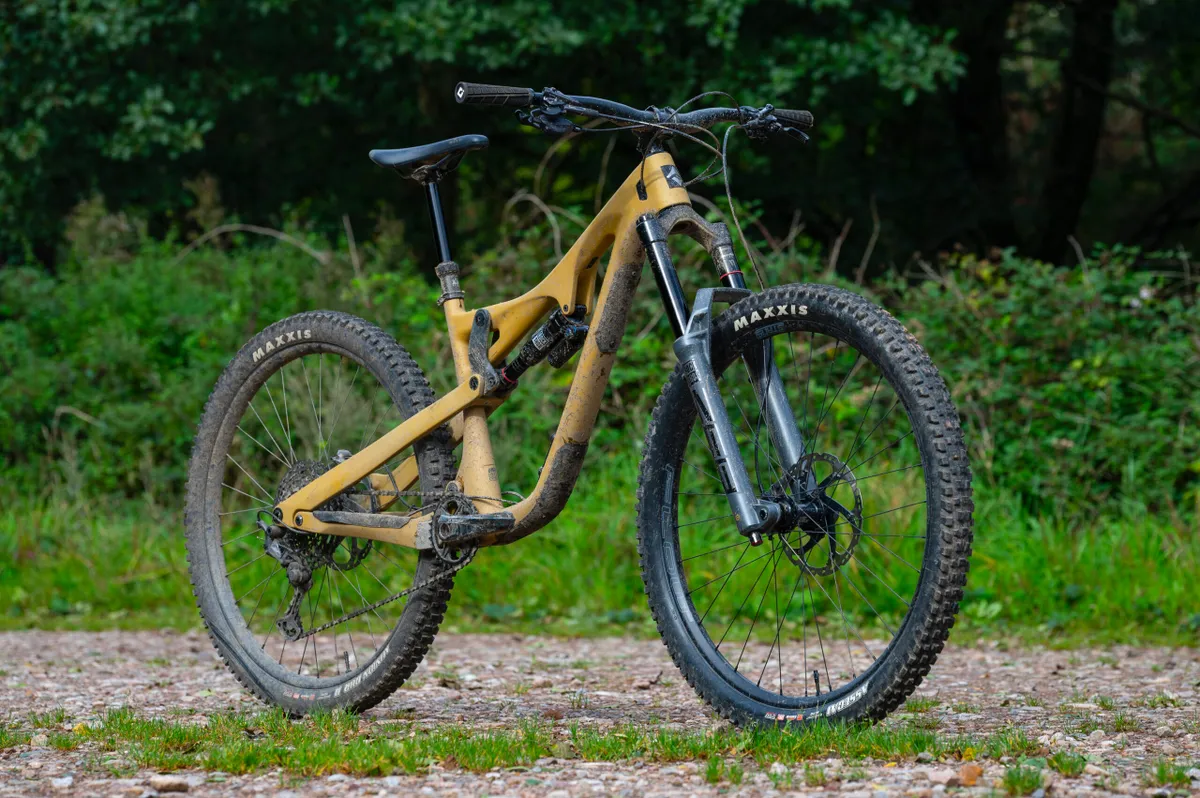
The La Sal Peak’s frame features a full carbon fibre construction, which Ari backs with a lifetime warranty.
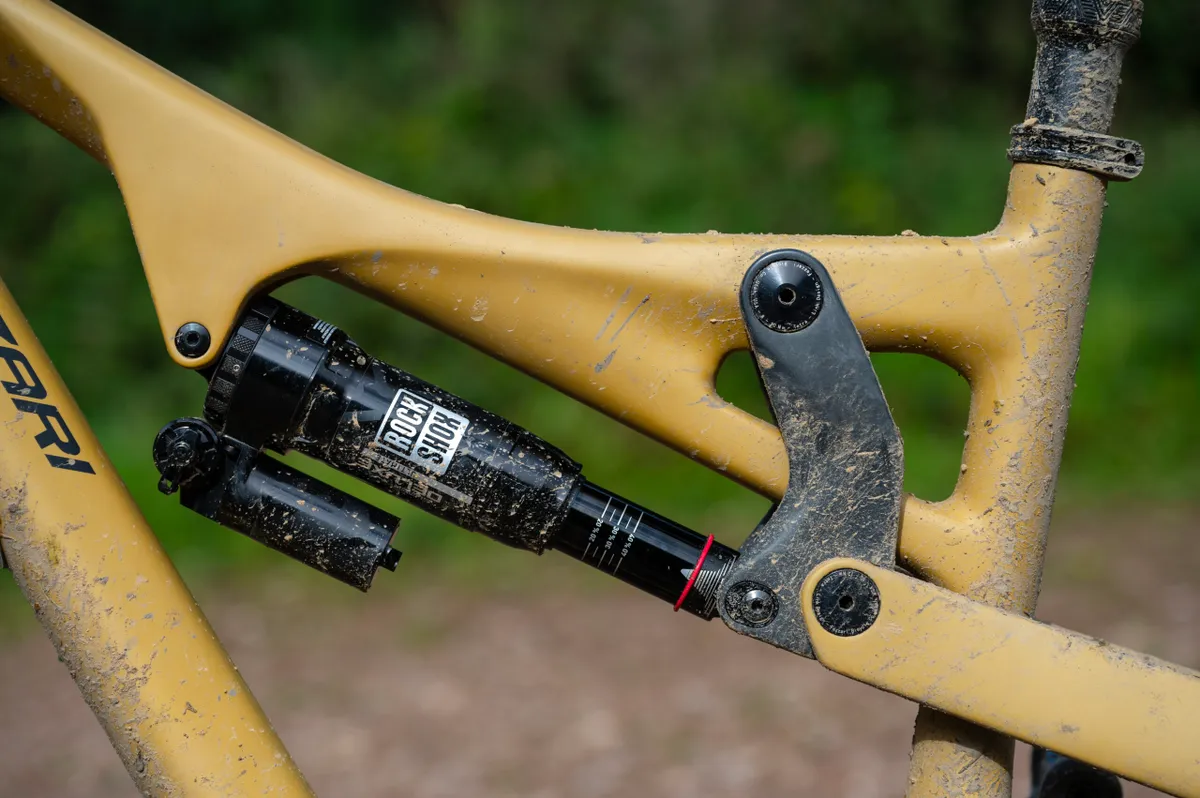
Although the bike has a svelte silhouette, it packs 170mm of rear-wheel travel controlled by the brand’s TetraLink suspension system, which is a Horst-link design, with the rear pivot featuring on the chainstay in front of the rear axle.
Sat inside the frame is a RockShox Super Deluxe Ultimate rear shock, which is custom-tuned to the bike and features a two-position pedal switch.
Ari says this makes the La Sal Peak “climb like a bike with less suspension, and descend as if it had more”. The bike has "anti-squat values that exceed 100 per cent in the pedalling platform”.
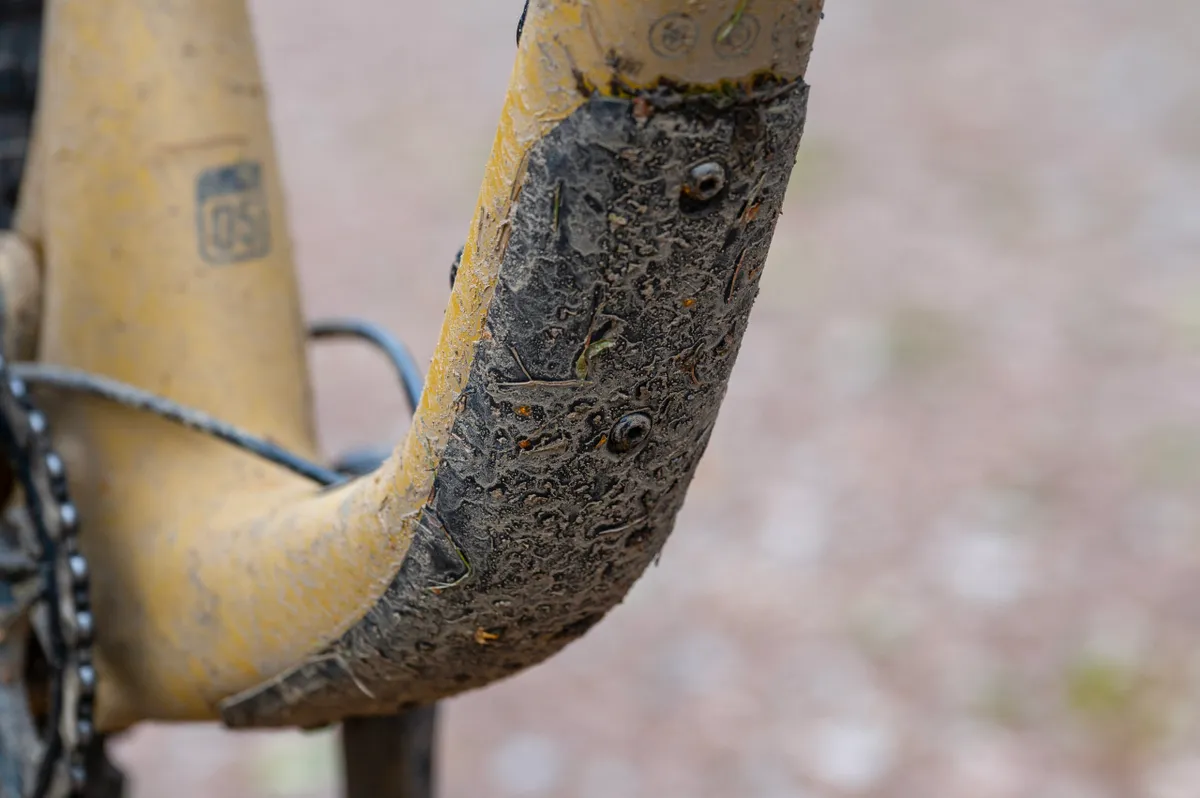
The frame also features down tube protection and a shuttle pad to fend off tailgate rub should you be flinging the front wheel over the back of your pickup truck.
Inside the front triangle are bolts for mounting a cage, though the La Sal Peak misses out on the current trend of internal frame storage.
RockShox ZEB Ultimate fork
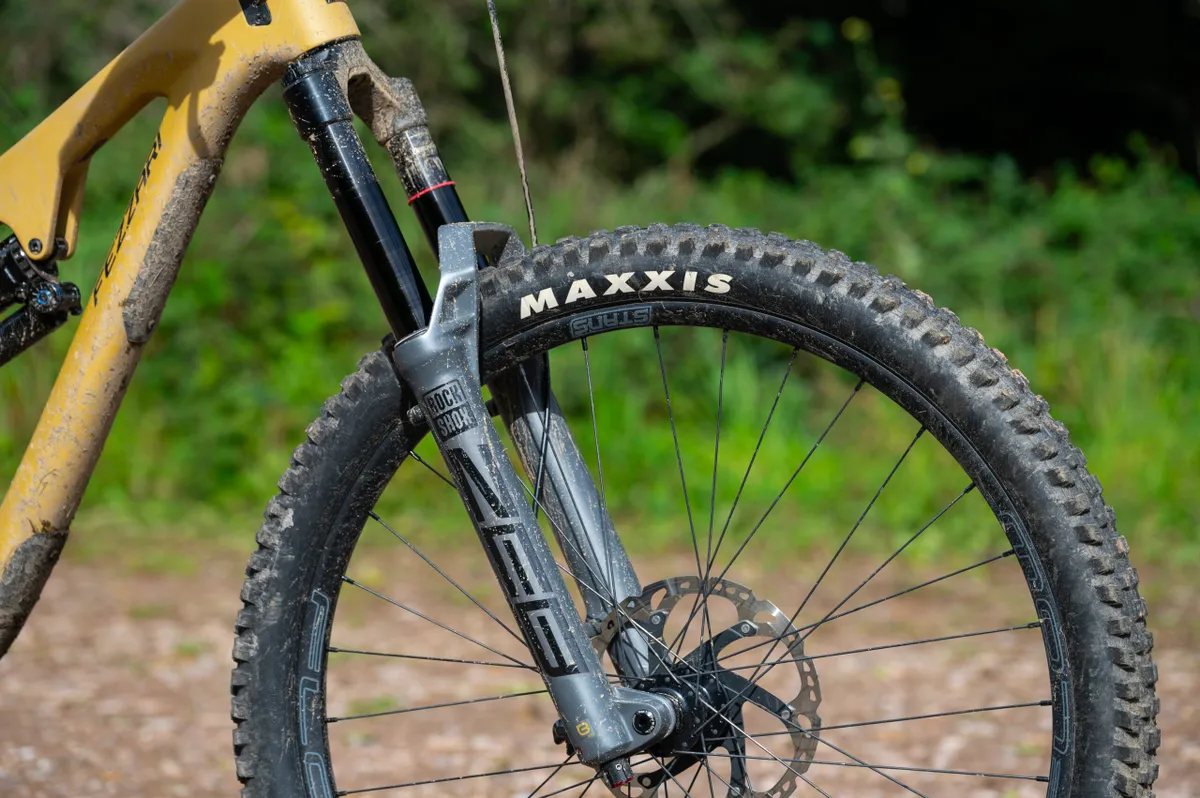
Bolted onto the front of the Ari is a 170mm ZEB Ultimate fork, featuring 38mm stanchion widths, which should bolster steering accuracy through the rough stuff.
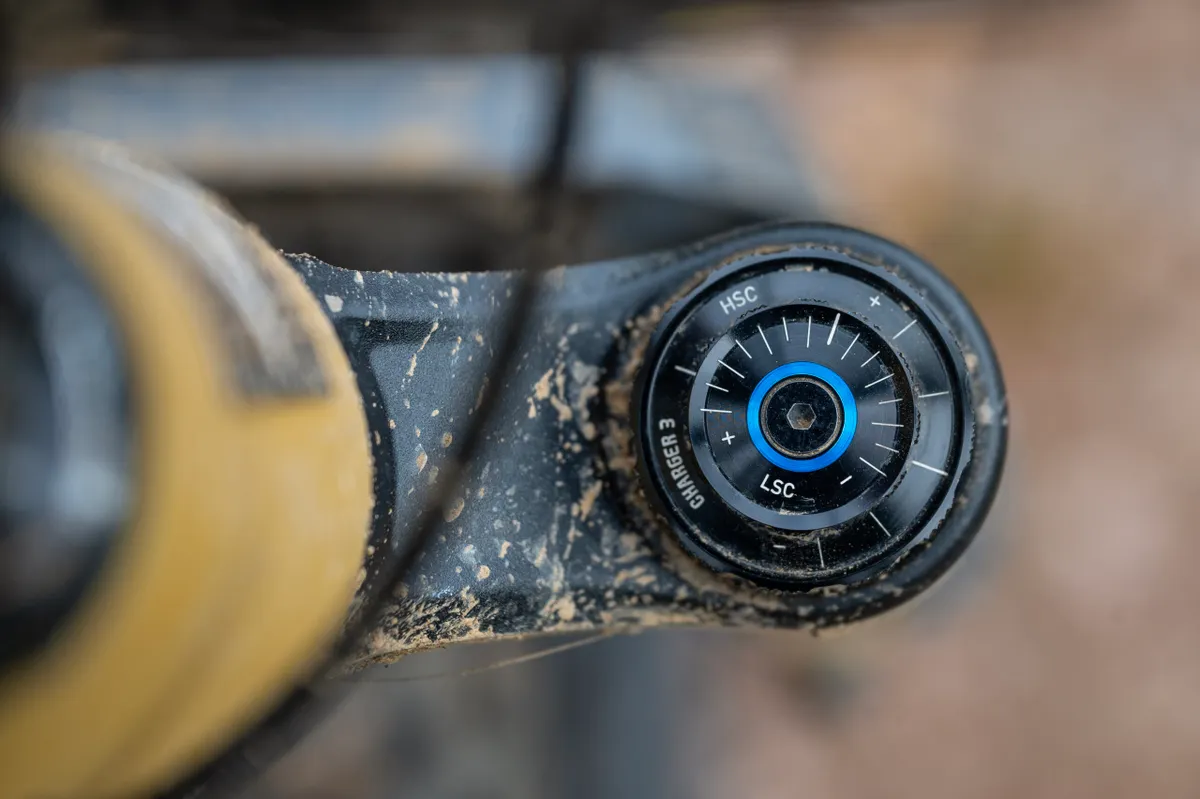
This variant of RockShox’s enduro fork features a Charger 3 RC2 damper, which uses the brand's ButterCups technology.
ButterCups are rubber pucks that sit on the damper and air spring shafts and are said to absorb high-frequency, low-amplitude vibrations, keeping them away from the rider.
Shimano XT drivetrain and brakes
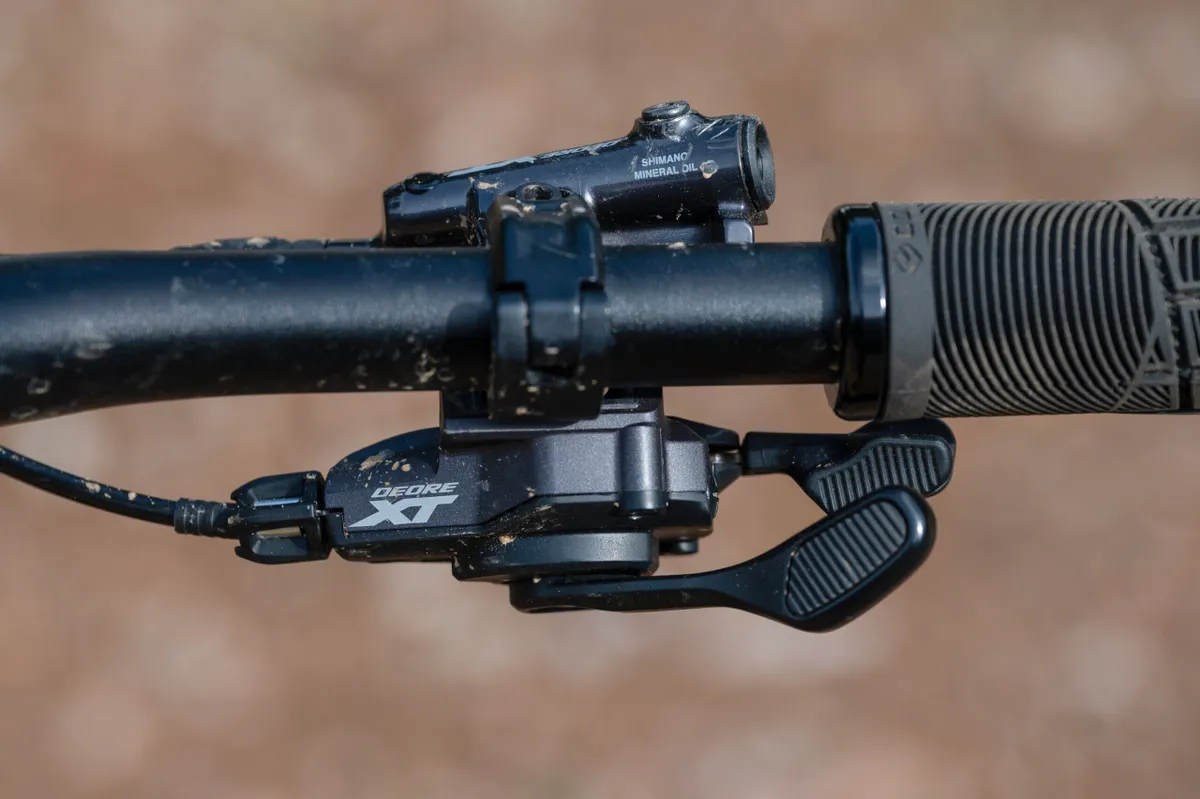
The La Sal Peak gets treated to a full Shimano XT 12-speed drivetrain; there are no cheap alternatives hiding out of sight here, with even the cassette and chain wearing the XT moniker.
I’m well acquainted with Shimano XT, and rate the groupset highly considering its features and price.

A standout feature of the bike is the Shimano XT M8120 four-piston brakes, which are a firm favourite of mine for their punchy performance and taut lever feel.
These bite down into 203mm rotors front and rear.
Stan's Flow MK4 wheelset and Maxxis rubber
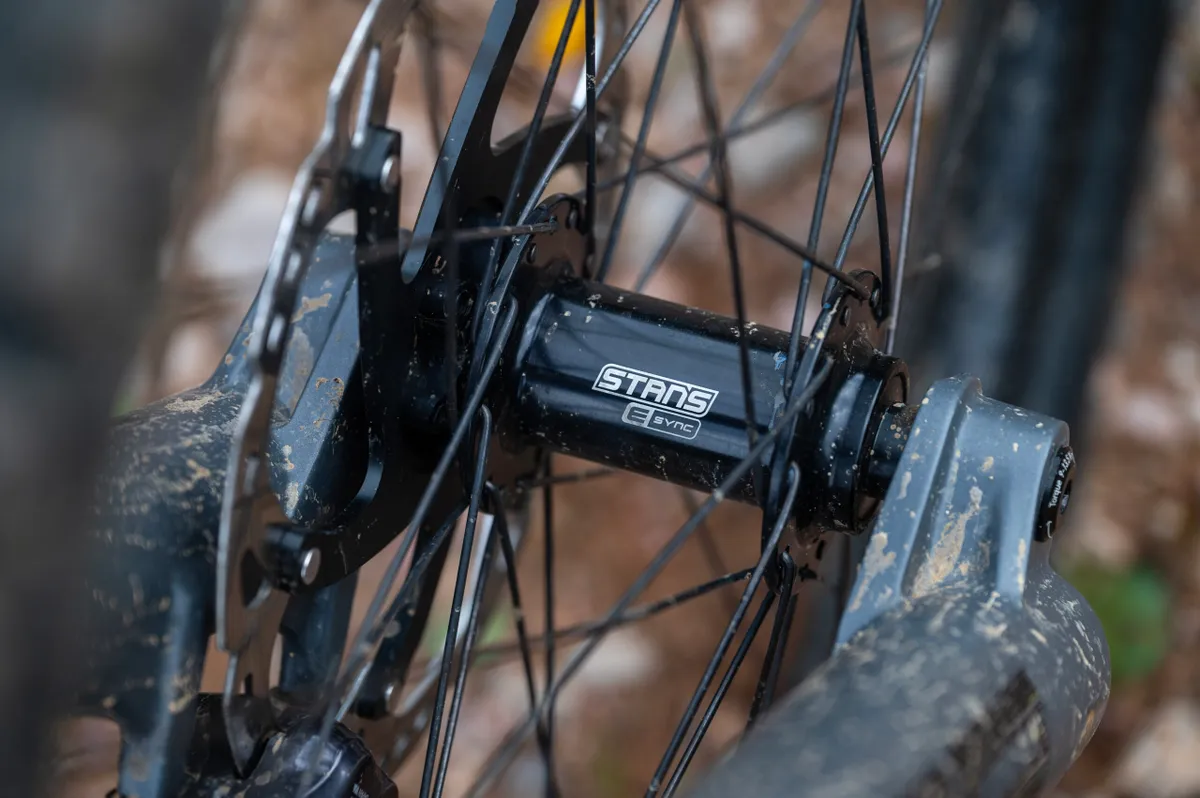
The bike rolls on Stans’s Flow MK4 rims, laced up to E-Sync hubs using Sapim Race spokes.
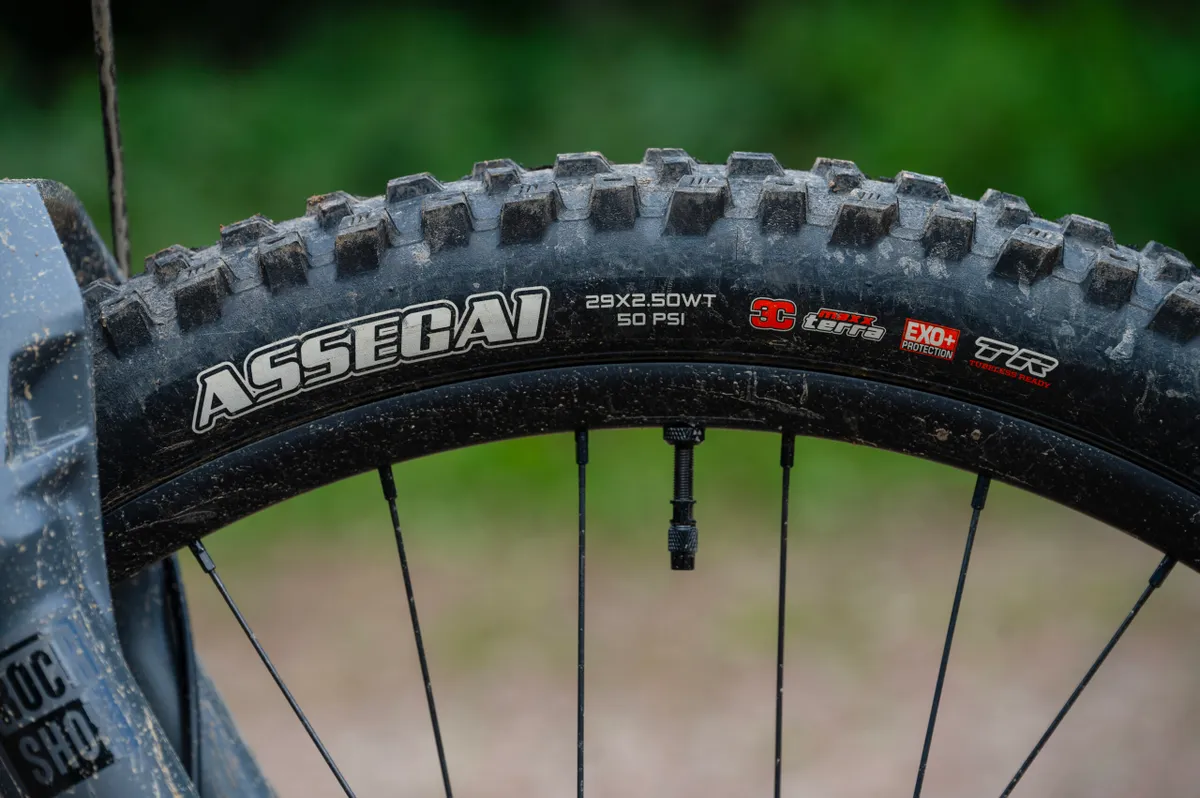
A Maxxis Assegai 2.5in EXO 3C TR tyre is used on the front wheel, while the rear is booted in a Maxxis Minion DHR II EXO 3C TR.
This is a popular choice of rubber that I have used before and have found to be adaptable to variable conditions.
Ari La Sal Peak Elite Shimano full specification
- Sizes (*tested): S, M*, L, XL
- Weight: 15.3kg (33.73lb), M size without pedals
- Frame: Carbon fibre, 170mm travel
- Shock: RockShox Super Deluxe Ultimate, 230x65mm
- Fork: RockShox ZEB Ultimate, 170mm travel
- Shifters: Shimano XT
- Derailleurs: Shimano XT
- Cranks: Shimano XT (1x12)
- Wheelset: Stan’s Flow MK4 (rims), Stan’s E-Sync (hubs)
- Tyres: Maxxis Assegai 2.5in EXO 3C TR (f), Maxxis Minion DHR II EXO 3C TR (r)
- Brakes: Shimano XT M8120 4-Piston
- Bar: Ari Team 35mm Alloy, 780mm
- Stem: Ari Charger CNC, 35mm
- Seatpost: PNW Loam Dropper
- Saddle: Ergon SM10
Ari La Sal Peak Elite Shimano geometry
| S | M | L | XL | |
|---|---|---|---|---|
| Top tube (mm) | 568.1 | 584.9 | 613.1 | 637.2 |
| Seat tube (mm) | 400 | 420 | 440 | 460 |
| Chainstay (mm) | 437 | 437 | 437 | 437 |
| Head angle (degrees) | 63.5 | 63.5 | 63.5 | 63.5 |
| Actual seat angle (degrees) | 72.9 | 73.6 | 74.1 | 74.6 |
| Effective seat angle (degrees) | 77.5 | 77.5 | 77.5 | 77.5 |
| Head tube (mm) | 90 | 100 | 110 | 120 |
| BB height (mm) | 347.6 | 347.6 | 347.6 | 347.6 |
| BB drop (mm) | 26.4 | 26.4 | 26.4 | 26.4 |
| Wheelbase (mm) | 1206.1 | 1230.4 | 1264.8 | 1294.2 |
| Fork offset (mm) | 44 | 44 | 44 | 44 |
| Standover height (mm) | 739.6 | 741.6 | 742.6 | 744.6 |
| Stack (mm) | 612.6 | 621.6 | 630.6 | 639.5 |
| Reach (mm) | 4335 | 455 | 485 | 510 |
As the most gravity-oriented bike in Ari’s line-up, it’s unsurprising that the La Sal Peak has slack geometry.
The size-medium bike I’m riding has a head angle of 63.5 degrees, an effective seat tube measurement of 77.5 degrees and a reach figure of 455mm.
Chainstay lengths measure 437mm across all sizes and it has a 1,230.4mm wheelbase.
Ari has a 23-Point Custom Setup, which takes into account height, weight, gender, age, inseam measurement, shoulder width, arm length, torso length and riding position, among other things.
The 23-Point Custom Setup not only indicates the best frame size, but Ari will also spec size-specific components such as dropper posts and crank-arm lengths.
This suggested a medium-sized bike would suit my 1.765m stature best.
Why did I choose this bike?
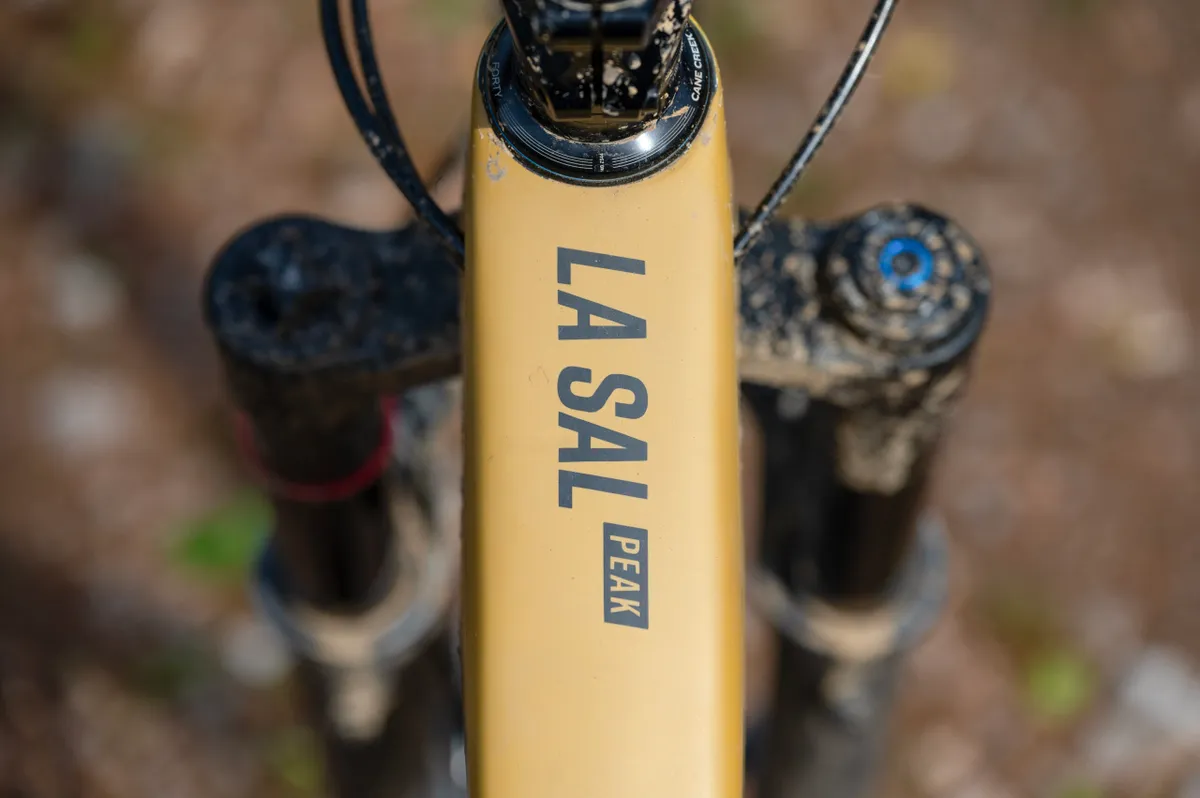
With plenty of steep, technical riding in my area, I wanted a bike that could deal with whatever gnarly trail lay beneath it, while still being comfortable and efficient on the way back to the trailhead.
Most of my riding consists of sessioning hand-built trails in my local woods, with the occasional ‘away day’ at one of Wales’ many bike parks.
The touted playfulness of the La Sal Peak stood out for this reason, and as someone who has come to terms with the fact he’s never going to be called up to the UCI EDR, I’m more than happy to sacrifice outright speed for this every day of the week.
With all of those elements coming together, the La Sal Peak looked like the perfect choice.
Ari La Sal Peak Elite Shimano initial setup
The Ari La Sal Peak comes partly assembled out of the box, with only the wheels and bars needing to be attached.
I quickly realised the 23-Point Custom Setup was a little off when setting the seat height, with the 150mm dropper post collar sitting a good 50mm above the seat clamp.
Before hitting the trails, I set the suspension up to Ari’s recommended sag measurements of 30 per cent in the fork and rear shock.
Fork
- 55psi
- One volume spacer
- 10 clicks of rebound
- 2 clicks of low-speed compression
- 0 clicks of high-speed compression (fully open)
Shock
- 160psi
- No volume spacers
- 5 clicks of rebound
- 4 of low-speed compression
All rebound and compression settings are measured from fully closed.
I usually run my tyre pressures around 21psi when riding around my local loamy trails, and increase them when heading to harder-packed, faster-running trails.
Setting the Stan's Flow Mk4 rims up tubeless with the Maxxis tyres proved a little difficult initially, with the rim tape needing to be retaped due to a hole created by improper adhesion of the original tape.
The bars measure 780mm wide on a 35mm stem and the saddle sits at 860mm from the bottom pedal.
Ari La Sal Peak Elite Shimano ride impressions
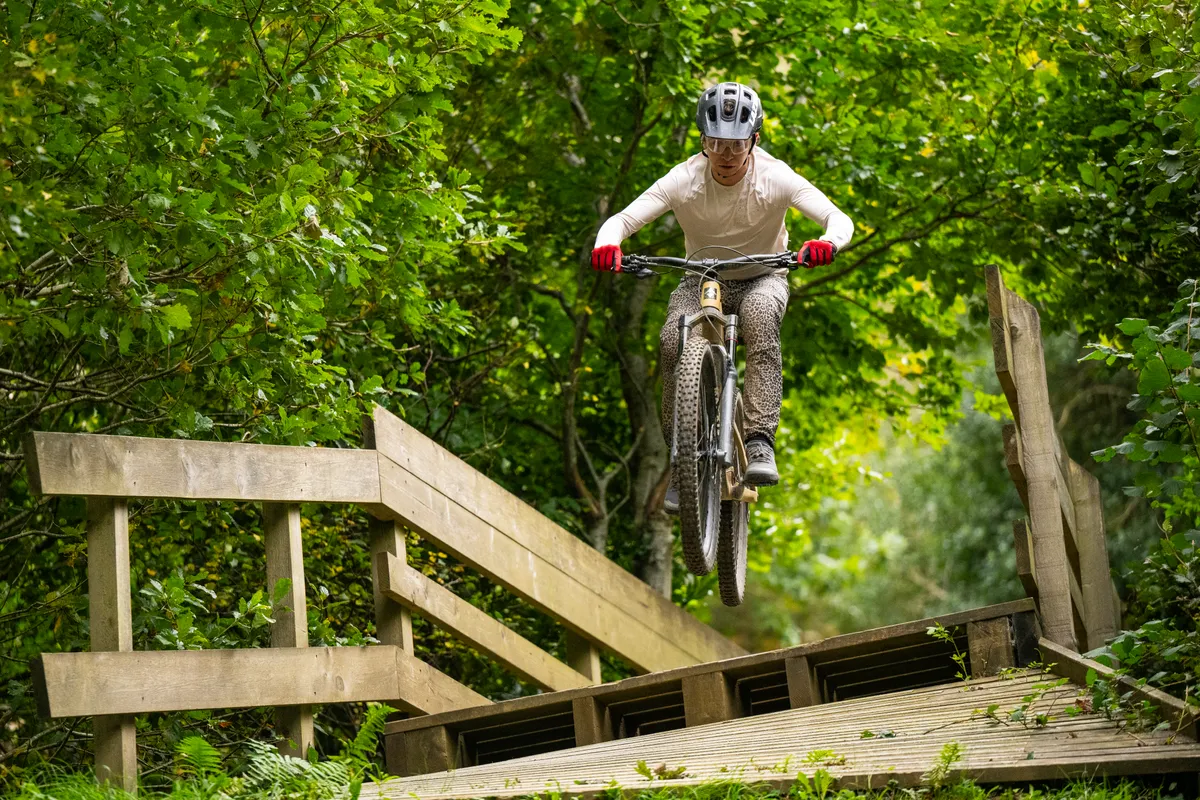
I have ridden the La Sal Peak for a couple of months now, and have taken it on a variety of terrain and trails during this time. The bike's first outing was in Morzine, France – albeit after a month of being ridden around the town of Troyes due to unforeseen van malfunctions en route.
From the first ride, the bike felt incredibly stable under power, with very little bob from pedalling forces.

This solid feel is very efficient when climbing and reduces fatigue when covering longer distances, compared to other enduro bikes. Less energy feels as though it’s being wasted.
On flatter trails, with less gradient, it also enables you to get up to speed faster and gives the La Sal Peak trail bike playfulness that enduro bikes can sometimes iron out of the trail.
A sacrifice is made for this on the roughest terrain, with the bike lacking the conquer-anything feel of the best enduro bikes, which provide sofa-like suspension softness in the rear end.
That’s not to say the La Sal Peak isn’t capable, but there’s certainly less isolation from the trail below, which might not be to everyone's taste.
I'm a fan, with the bike feeling more adapted to big days in the saddle than race-run success.
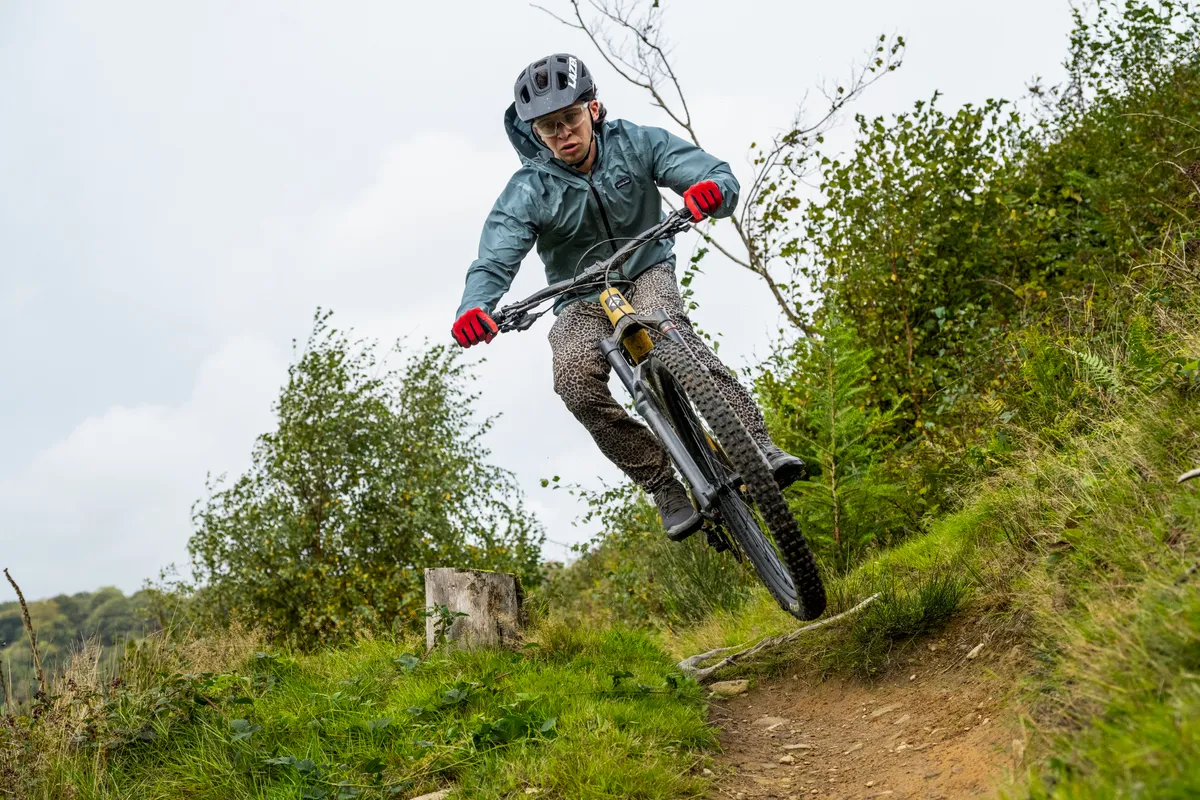
The slack head angle makes the bike feel direct and unshakable on most terrain, although I find the short reach measurement of 455mm on the medium-sized bike a little short when tackling the steepest trails, with my weight further forward than on other bikes.
The RockShox suspension works extremely well, with the ZEB Ultimate providing plenty of support and adjustability up front and the Super Delux Ultimate feeling well-damped in the frame.
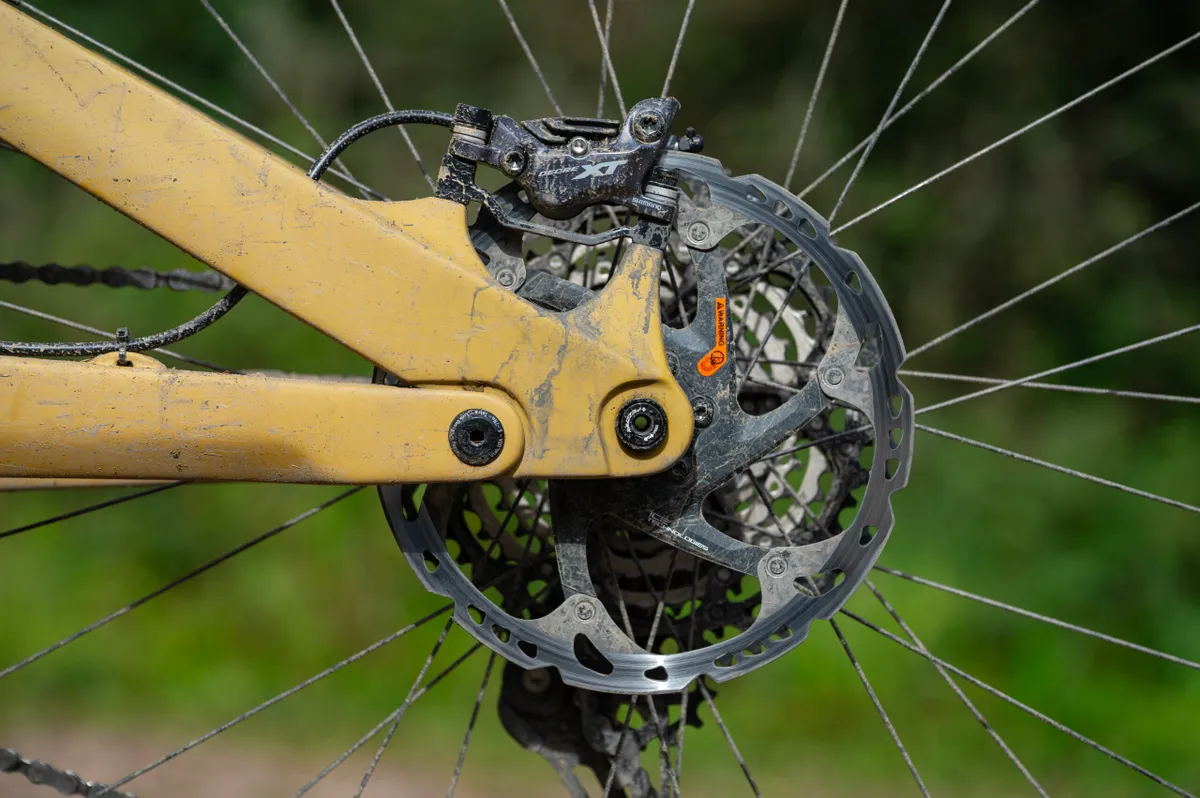
Shimano’s XT M8120 four-piston brakes work wonderfully, providing the desired bite and modulation that can be expected from this benchmark brake.
However, I have had problems while shifting gear, which I think can be put down to the design of the La Sal Peak's cable routing through the chainstay.
The design sees the cable exit out of the bottom of the chainstay, causing a tight bend to the cable before it enters the port on the rear of the XT derailleur.
This has caused excessive wear to the cable housing, which shows a significant kink, and has made my shifts less than precise.
I have tried pulling more cable through, but this leaves the cable more vulnerable to snagging on trail debris.

The cable routing also runs close to the main pivot bearing near the chainring and has already worn through the paint, exposing the carbon below.
Ari said it was aware of this issue, and recommended I install a small piece of protective 3M tape to the frame at the rub point to stop the issue progressing further. I followed those instructions and it fixed the problem.
Other niggles are the chainstay protector, which has begun to peel off where my foot rubs it, and the matt paint that collects the tacky rubber from my shoe soles on the seatstays.
This is common for those who ride left-foot forwards, because the trailing right foot comes into regular contact with the protector when you’re descending.

As well as the dropper post’s travel being too short, meaning the saddle is in my way on descents, I find the 780mm bars too narrow for enduro riding.
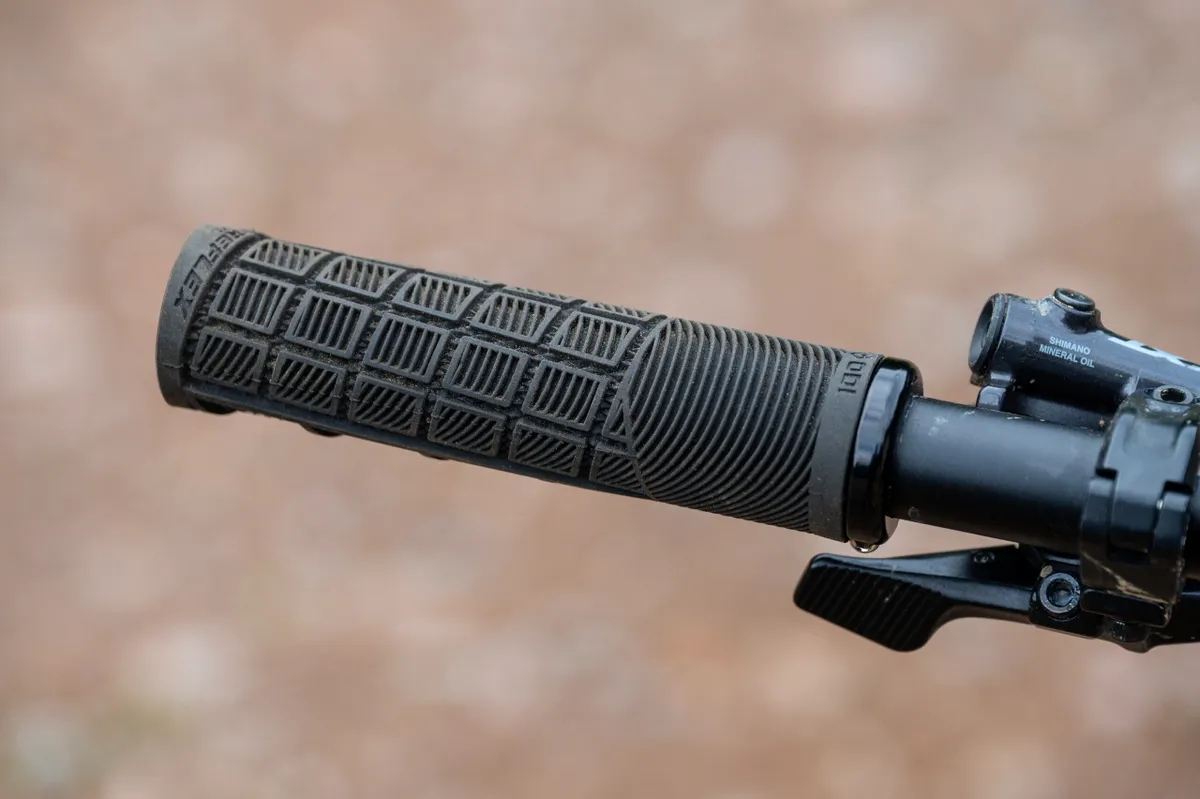
I also had to change grips during my early tests from the Ergon GA2 to the ODI Reflex because I was experiencing too much arm pump from the originals, but this was soon relieved with the thicker grips.
There is plenty of traction on offer, with Maxxis’ Assegai and DHR II tyres proving to be all-rounders by finding buckets of grip on hardpack, rocks and loam.
The tyres meet their match in the absolute muddiest of conditions, not that this fair-weather rider experiences those too often.
With a few upgrades, I’m excited to see just what the La Sal Peak is capable of and how it performs as I get more confident at pushing its boundaries.
Ari La Sal Peak Elite Shimano upgrades

As mentioned, I have already made some adjustments to the cockpit, but there is more to do down the line, with an 800mm bar destined to replace the 780mm bar currently in place.
A longer dropper post is also on the cards, because I’d like to be able to get the saddle completely out of the way on the descents.
I would also like to try the bike with a mullet setup to give the bike an even more playful ride feel, better suited to the steep, tight and twisty trails I ride.
The mullet setup also increases the bike's reach by 10.7mm, from 455mm to 465.7mm, which should aid the geometry.
With fancy new SRAM AXS drivetrain options now available, I’d be kicking myself if I didn’t try to get some to remove the cable-routing woes on the La Sal Peak’s chainstay.
It would also be interesting to sample a coil shock in the frame to see if it adds plushness to the suspension system.
BikeRadar’s long-term test bikes
BikeRadar's long-term test bikes give our team the opportunity to get to grips with these machines, so we can tell you how they perform through different seasons and on ever-changing terrain, through a year of riding.
Some choose a bike from their favoured discipline and ride it hard for a year, others opt for a bike that takes them outside their comfort zone.
We also use our long-term bikes as test beds for the latest kit, chopping and changing parts to see what really makes the difference – and help you decide which upgrades are worth spending your money on.
These bikes also provide an insight into the team's riding through the year – how they like to ride and where life on two wheels takes them, from group rides on local lanes and trails, to adventures further afield.
To see all of the BikeRadar team’s long-term test bikes – and to stay up-to-date with the latest updates – visit our long-term review hub.
Product
| Price | 4799.00 USD |
| Weight | 15.3000, KILOGRAM (M) - Size M |
Features
| Fork | RockShox ZEB Ultimate |
| br_stem | Ari Charger CNC |
| br_chain | Shimano XT |
| Tyres | Maxxis Assegai 2.5in EXO+ 3C TR (f), Maxxis Minion DHR II EXO+ 3C TR (r) |
| br_brakes | Shimano XT |
| br_cranks | Shimano XT |
| br_saddle | Ergon SM10 |
| br_wheels | Stan’s Flow MK4 (rims), Stan’s E-Sync (hubs) |
| br_shifter | Shimano XT |
| br_cassette | Shimano XT |
| br_seatpost | PNW Loam Dropper |
| br_handlebar | Ari Team 35mm Alloy |
| br_rearShock | RockShox Super Deluxe Ultimate |
| br_availableSizes | S, M, L, XL |
| br_rearDerailleur | Shimano XT |
